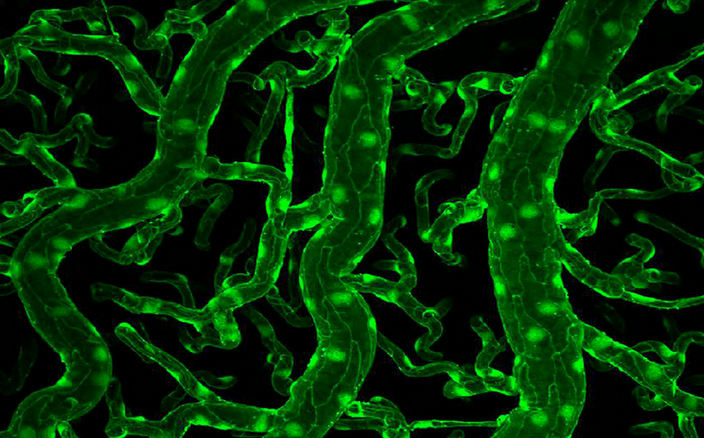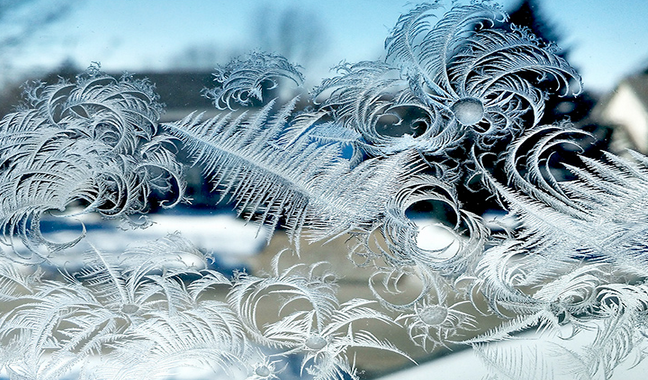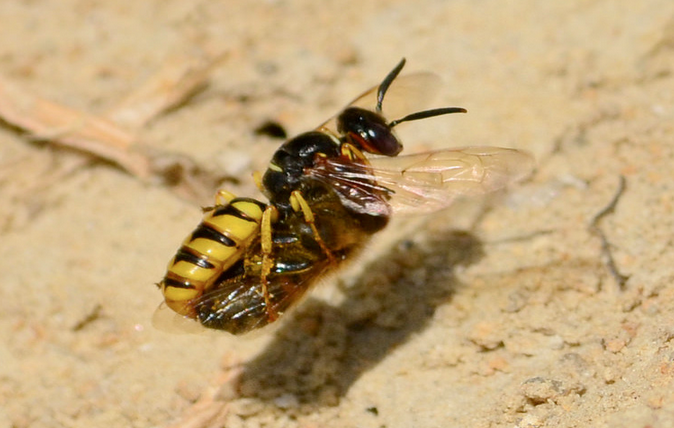BTN.com staff, June 7, 2015
A picture is worth a thousand words, and in the case of the University of Wisconsin?s Cool Science Image Contest, some of those words are going to be a bit lengthier than usual.
The university launched this event four years ago with two goals in mind: showcase the artistry of scientific work, and educate the entire student body and faculty on important concepts in various technical, complex disciplines.
Judges whittled the 115 submissions in this year?s competition down to a dozen winners - 11 still images and one video - to highlight the marriage of scientific imaging, art and science communication. By the looks of the top efforts, there are some modern-day Leonardo da Vincis and Ben Franklins whipping up beautifully strange brews of science and art in Madison.
One of those winning entries was from Jessica Plavicki, an assistant professor in botany and genetics at the University of Wisconsin. Her micrograph of vasculature in the adult zebrafish brain - a bright-green platter of multi-limbed, tubular structures that seem to float in dark space - dazzled the judges.
 While some of the winning entries used complex tools such as an MRI machine to capture eye-popping images, botany professor Marisa Otegui went the simple route. She picked up her cellphone and took a photo of ice crystals on her lab?s windowpane. The resulting picture of feather-like structures is an edgy vision of what happens when Mother Nature plays graphic designer.
While some of the winning entries used complex tools such as an MRI machine to capture eye-popping images, botany professor Marisa Otegui went the simple route. She picked up her cellphone and took a photo of ice crystals on her lab?s windowpane. The resulting picture of feather-like structures is an edgy vision of what happens when Mother Nature plays graphic designer.
?It didn?t take much more than five minutes to capture the ice crystals,? Otegui said.
 Otegui, who often works with frozen botanical samples in the lab, said she also entered some time-consuming and expensive microscopic images in the 2015 Cool Science Image Contest that didn?t make the final cut.
Otegui, who often works with frozen botanical samples in the lab, said she also entered some time-consuming and expensive microscopic images in the 2015 Cool Science Image Contest that didn?t make the final cut.
?I guess this one was one of the best images to the jury,? Otegui said. ?I was shocked the other images that cost thousands of dollars didn?t win, but sometimes [a great] image from a complicated piece of equipment is hard to obtain because there is so much information.?
The overall diversity of winning images is impressive, ranging from close-ups of ants and bees to microscopic looks at embryonic stem cells and mouse neurons. According to Terry Devitt, director of research communications for the University of Wisconsin, contest winners received $100 gift cards and poster-sized prints of their images.
?There?s a lot of notoriety that comes with it,? Devitt said of the competition. ?It?s been picked up by Smithsonian Magazine and other places have grabbed onto it. It?s a way to recognize the creative powers of faculty, staff and students.?
[btn-post-package]Plavicki said she?d previously entered the contest on two occasions, earning honorable mention and runner-up finishes. Many might have given up after that, but not her.
?I thought I needed to give it another try,? Plavicki said. ?[The photograph] could be plants or something from outer space or some deep-sea organism.?
This third time around, fixing the lens of a confocal microscope on the inner workings of a zebrafish?s nerve center proved to be the proverbial charm. Plavicki attributed the win not only to her artistic talents, but also to the fact that she was able to apply the same ?try, try again? mentality that she brings to her experiments to this contest.
?Persistence is critical in all endeavors,? she said.
By Tony Moton







